Topic
geoscientificInformation
25 record(s)
Type of resources
Available actions
Provided by
Years
Formats
Representation types
Update frequencies
Status
Scale
-
The resource was developed by NEXANT (EEUU) for ECREEE using 3TiER global dataset. The methodology is explained in the resource below available for downloading. Dataset is available in raster format (.geotiff) with a resolution of 3,5 km.
-
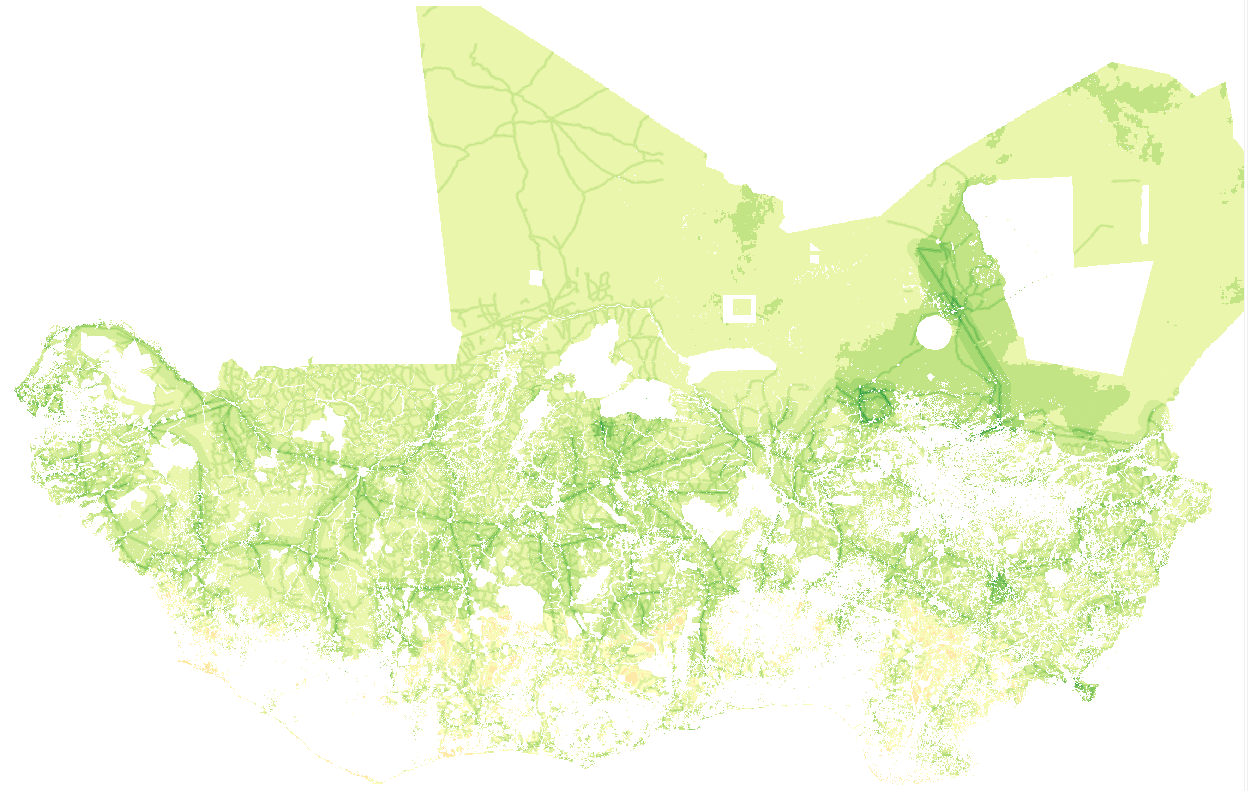
The suitability maps, contain information on locations suitable for installation of the respective solar systems in accordance with the restrictive criteria adopted. Locations are evaluated according to their suitability for solar systems deployment according to topographical, legal, and social constraints, as well as factors that could facilitate or impede solar generation development. The study is conducted on a regional scale. The results can be used for identification of potential areas of interest for solar generation deployment, and as a support for integration between electricity grid expansion and off-grid electrification policies.
-
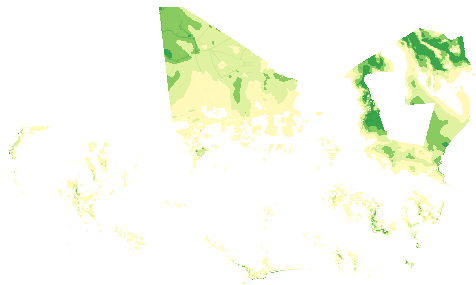
The suitability maps, contain information on locations suitable for installation of the respective wind electricity generation systems in accordance with the restrictive criteria adopted. Locations are evaluated according to their suitability for onshore wind systems deployment according to topographical, legal, and social constraints, and well as factors that could facilitate or impede wind generation development. The present study focus exclusively on land suitability for the installation of onshore wind turbine and wind farm. The study is conducted on a regional scale. The results can be used for identification of potential areas of interest for solar generation deployment, and as a support for integration between electricity grid expansion and off-grid electrification policies. Off-grid installations - ecological scenario: Installation NOT connected to the electrical grid, environmental impacts minimized
-
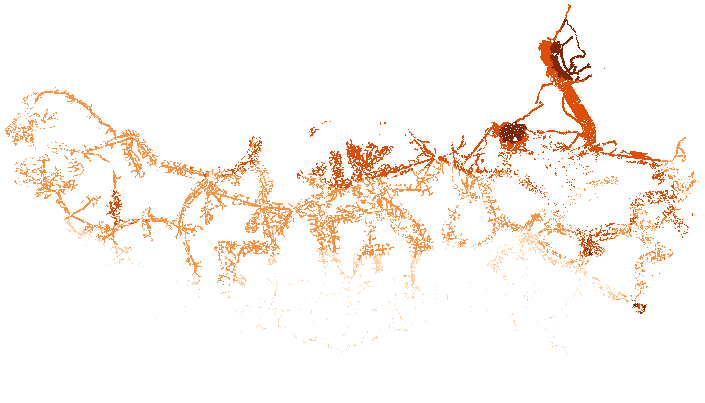
This dataset was generated using GIS methods to estimate technical potential for solar electricity generation in rural areas of ECOWAS region. Technical potential of solar generation in a chosen area may be defined as the amount of the total yearly solar radiation available in that area, taking into account existing geographical constraints, ("suitability maps") that can be converted into electricity given the available solar power technologies. Technical potentials in GWh per year per cell at 1km resolution have been calculated by multiplying DNI (or GHI) for the technical parameters (performance, efficiency) related to CSP or PV, and for the available area. The available area was estimated using for: - CSP (grid connected) only cells with land suitability score > 302 (5% of total cells) - PV (grid connected) only cells with land suitability score > 299 (5% of total cells) - PV (off grid) only cells with land suitability score > 255 (5% of total cells)
-
This dataset shows the river network for West Africa and the estimated hydropower potential as well as several other interesting attributes. After detailed calculation, the attribute values were rounded to a reasonable accuracy. This dataset is not intended for local studies but only for regional comparison. The dataset was created using the following methodology: 1. The river network was derived from the Hydrosheds 15s dataset: a) A threshold of 10 cells in the flow accumulation grid was used to delineate river reaches. b) Reaches with zero long-term mean annual discharge (rounded at 0.000 m³/s) were removed. c) Some remaining reaches in desert areas were manually removed. d) Small tributary reaches in reservoir water bodies were manually removed. e) The topology between adjacent reaches was computed from nodes and the flow accumulation grid (to determine which of the adjacent reaches is located downstream). 2. Discharge was computed with an annual water balance model using precipitation (TRMM) and potential evapotranspiration (CRU) as inputs. The water balance model was calibrated with observed discharge data of about 400 gauges (Global Runoff Database). The last cellpoint at the river network before a confluence with a downstream reach at 15s Hydrosheds resolution was used to query discharge from the discharge grid. The monthly distribution of discharge was computed by superimposing a specific seasonality derived from observed discharge data. At some rivers (Niger, Bani, Yobe) diversions and evaporation losses were roughly considered. 3. Computation of slope for each river reach: a) Compute length of reaches. b) Aggregate Hydrosheds unconditioned DEM (based on SRTM DEM) from 3s resolution to 15s resolution. After extensive testing (also with ASTER DEM) the 10% percentile of the 3s elevation values within the 15s box was selected as aggregation value. c) Extract upstream and downstream elevation for each reach from the aggregated DEM (see previous step). d) Adjust upstream and downstream reach elevation values with the following method: i. Adjustment of elevation in downstream direction by carving through barriers. ii. Adjustment of elevation in upstream direction by filling sinks. iii. Compute average of previous two steps. e) Smoothing of elevation along the river network. Differentiate between main rivers and tributaries in the smoothing process. Several rounds of smoothing with different settings were applied. f) Consider artificial reservoirs (e.g. Lake Volta) by ensuring zero slope in reservoir water bodies. 4. Slope was computed from length and elevation difference. 5. Gross theoretical hydropower potential (attribute POWER) was computed from mean annual discharge (Q_YEAR) and elevation difference in reach (ELEV_DIFF). Specific hydropower potential (POWER_SPEC) was computed from POWER and reach length. 6. Preferred hydropower plant size is based on a classification scheme using specific hydropower potential (attribute POWER_SPEC) and mean annual discharge (attribute Q_YEAR). The classification scheme is based on an analysis of existing hydropower plants in West Africa and some general considerations for hydropower plant design. 7. River names were manually assigned by comparison with the following data sources: a) GRDC gauges b) Nigeria JICA gauges c) Sierem GIS dataset d) Google maps e) Open Streetmap f) Michelin map (online version) g) Travelmag map (analog version) h) Various other sources (Wikipedia, detailed local maps, etc.) 8. For rivers forming international borders the country entries in the attribute table were manually assigned. The manual editing was required because the GIS datasets (river network and countries) do not align fully accurate at country borders. 9. Future change in annual discharge was computed by running the water balance model using the delta-change method for future precipitation and air temperature. The climate change projections were extracted from 30 Regional Climate Model (RCM) runs included in the CORDEX-Africa ensemble for the representative concentration pathways RCP4.5 and RCP8.5. Future change in potential evapotranspiration was estimated using an empirical relationship between air temperature and potential evapotranspiration. The following tools were used for creating this dataset: • ArcGIS 9.2: main GIS tool • ArcGIS 10.0: Python scripting and model building • ArcView 3.1: specific tasks with large attribute tables where more recent GIS versions fail • GDAL: automatic merging of DEM tiles • Fortran: main processing tool for various tasks o Pre-processing of GPCC and satellite precipitation data o Water balance modelling o Spatial aggregation of DEMs from 3s to 15s resolution o Adjustment of reach elevation (fill sinks, carve through barriers, smoothing) • MS Excel: some data pre-processing and visualization • Libre Office: dbf file manipulation • CDO: Climate Data Operators for processing of CORDEX-Africa climate model data • Shell scripts: For automatic file processing of climate model data • Batch scripts: For automatic calls to Fortran programs For each reach of the river network the following attributes are available (units in brackets): • ARCID: ID number of reach • TOARCID: ID number of next downstream reach • FROMARCID: ID number of dominant upstream reach (largest inflow) • NB: ID number of sub-area • RIVER: River name (English) • RIVER_FREN: River name (French) • COUNTRY_1: Country (ISO code) • COUNTRY_2: Second country (ISO code) if reach forms international border • AREA_Km2: Total upstream catchment area (km²) of reach • LENGTH_Km: Length (km) of reach • EXRIVER: Flag indicating external river originating from another sub-area (0: local river, 1: external river) • ELEV_US_m: Elevation (m) at upstream end of reach • ELEV_DS_m: Elevation (m) at downstream end of reach • ELEV_DIFF: Elevation difference (m) in reach • SLOPE: Slope (m/m) of reach • PWR_MW: Theoretical hydropower potential (MW) for the period 1998-2014 • PWR_MW_KM: Specific hydropower potential (MW/km) for the period 1998-2014 • QYEAR_m3_s: Mean annual discharge (m³/s) simulated for the period 1998-2014 • QJAN_m3_s: Mean monthly discharge (m³/s) 1998-2014 in January • QFEB_m3_s: Mean monthly discharge (m³/s) 1998-2014 in February • QMAR_m3_s: Mean monthly discharge (m³/s) 1998-2014 in March • QAPR_m3_s: Mean monthly discharge (m³/s) 1998-2014 in April • QMAY_m3_s: Mean monthly discharge (m³/s) 1998-2014 in May • QJUN_m3_s: Mean monthly discharge (m³/s) 1998-2014 in June • QJUL_m3_s: Mean monthly discharge (m³/s) 1998-2014 in July • QAUG_m3_s: Mean monthly discharge (m³/s) 1998-2014 in August • QSEP_m3_s: Mean monthly discharge (m³/s) 1998-2014 in September • QOCT_m3_s: Mean monthly discharge (m³/s) 1998-2014 in October • QNOV_m3_s: Mean monthly discharge (m³/s) 1998-2014 in November • QDEC_m3_s: Mean monthly discharge (m³/s) 1998-2014 in December • Q_2035_P25: Change in future mean annual discharge in % (2026-2045 vs. 1998-2014) for the lower quartile simulation using 30 climate model runs of the CORDEX-Africa ensemble (RCP4.5 and RCP8.5) • Q_2035_P50: Change in future mean annual discharge in % (2026-2045 vs. 1998-2014) for the median simulation using 30 climate model runs of the CORDEX-Africa ensemble (RCP4.5 and RCP8.5) • Q_2035_P75: Change in future mean annual discharge in % (2026-2045 vs. 1998-2014) for the upper quartile simulation using 30 climate model runs of the CORDEX-Africa ensemble (RCP4.5 and RCP8.5) • Q_2055_P25: Change in future mean annual discharge in % (2046-2065 vs. 1998-2014) for the lower quartile simulation using 30 climate model runs of the CORDEX-Africa ensemble (RCP4.5 and RCP8.5) • Q_2055_P55: Change in future mean annual discharge in % (2046-2065 vs. 1998-2014) for the median simulation using 30 climate model runs of the CORDEX-Africa ensemble (RCP4.5 and RCP8.5) • Q_2055_P75: Change in future mean annual discharge in % (2046-2065 vs. 1998-2014) for the upper quartile simulation using 30 climate model runs of the CORDEX-Africa ensemble (RCP4.5 and RCP8.5) • PLANT_SIZE: Preferred hydropower plant size (0: none, 1: <1MW, 2: 1-30MW, 3: >30MW installed capacity) • LAT: Latitude (decimal degrees North) at end of reach • LON: Longitude (decimal degrees East) at end of reach
-
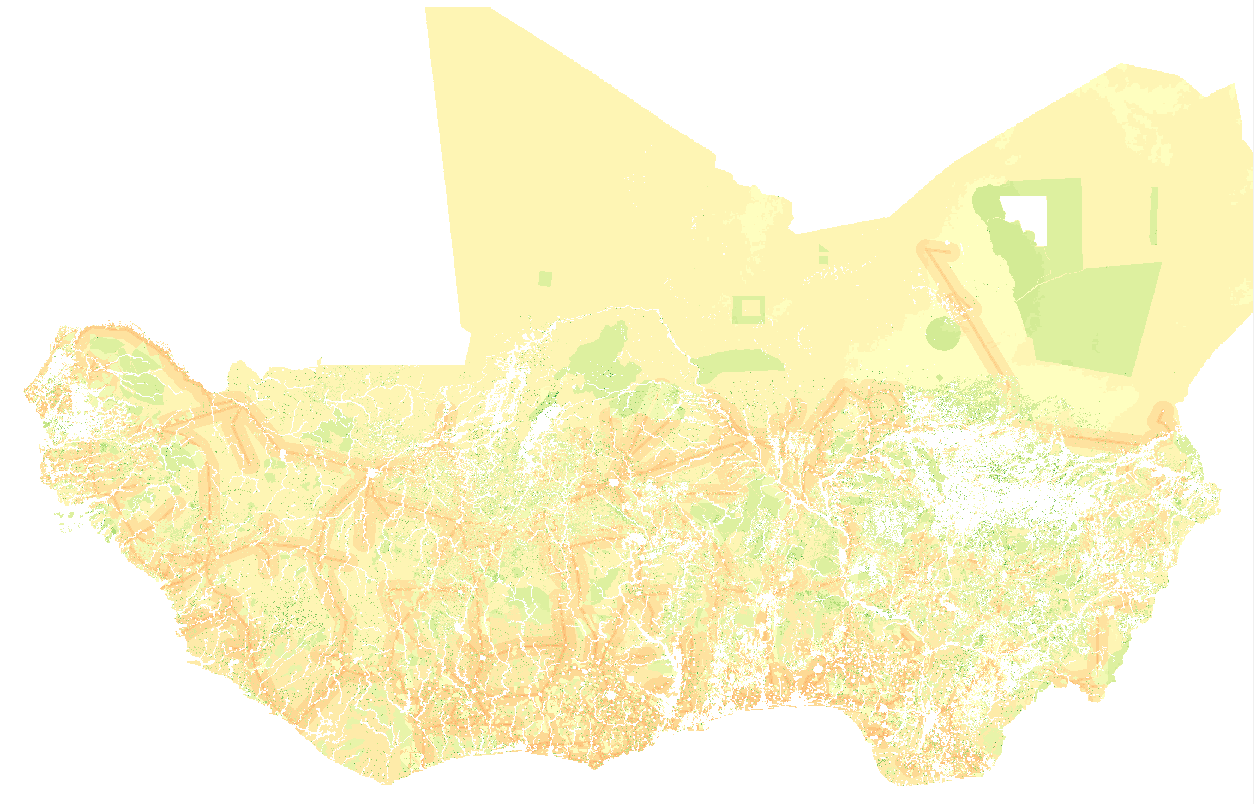
The suitability maps, contain information on locations suitable for installation of the respective solar systems in accordance with the restrictive criteria adopted. Locations are evaluated according to their suitability for solar systems deployment according to topographical, legal, and social constraints, as well as factors that could facilitate or impede solar generation development. The study is conducted on a regional scale. The results can be used for identification of potential areas of interest for solar generation deployment, and as a support for integration between electricity grid expansion and off-grid electrification policies.
-
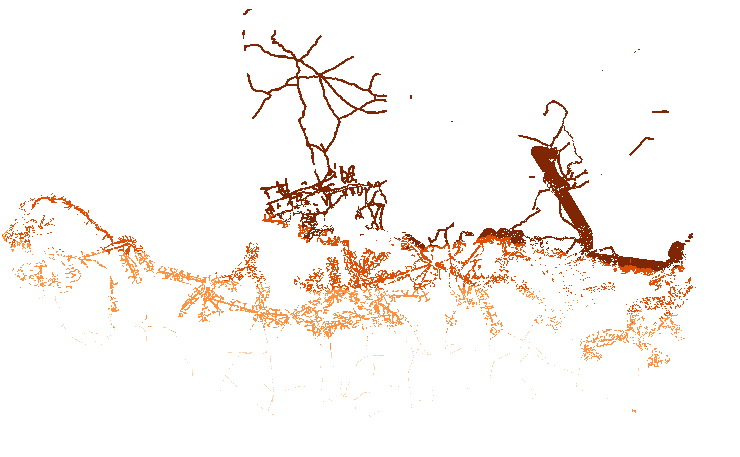
This dataset was generated using GIS methods to estimate technical potential for solar electricity generation in rural areas of ECOWAS region. Technical potential of solar generation in a chosen area may be defined as the amount of the total yearly solar radiation available in that area, taking into account existing geographical constraints, ("suitability maps") that can be converted into electricity given the available solar power technologies. Technical potentials in GWh per year per cell at 1km resolution have been calculated by multiplying DNI (or GHI) for the technical parameters (performance, efficiency) related to CSP or PV, and for the available area. The available area was estimated using for: - CSP (grid connected) only cells with land suitability score > 302 (5% of total cells) - PV (grid connected) only cells with land suitability score > 299 (5% of total cells) - PV (off grid) only cells with land suitability score > 255 (5% of total cells)
-
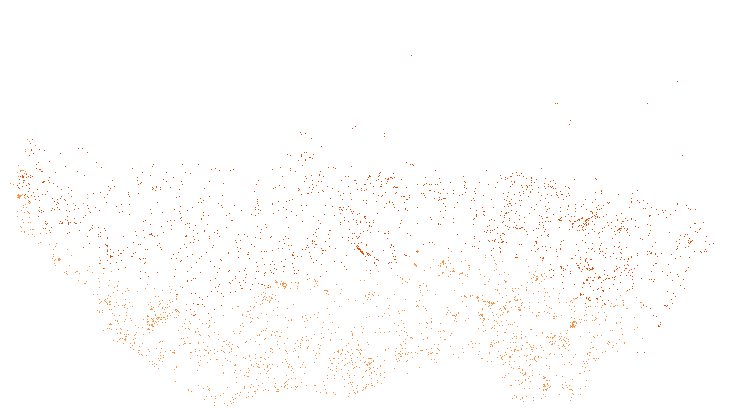
This dataset was generated using GIS methods to estimate technical potential for solar electricity generation in rural areas of ECOWAS region. Technical potential of solar generation in a chosen area may be defined as the amount of the total yearly solar radiation available in that area, taking into account existing geographical constraints, ("suitability maps") that can be converted into electricity given the available solar power technologies. Technical potentials in GWh per year per cell at 1km resolution have been calculated by multiplying DNI (or GHI) for the technical parameters (performance, efficiency) related to CSP or PV, and for the available area. The available area was estimated using for: - CSP (grid connected) only cells with land suitability score > 302 (5% of total cells) - PV (grid connected) only cells with land suitability score > 299 (5% of total cells) - PV (off grid) only cells with land suitability score > 255 (5% of total cells)
-
The resource was developed by CENER (The National Renewable Energy Center, Spain) for ECREEE. High resolution data of 1km x 1km developed using Numerical Weather Prediction (NWP) model from hourly meteorological weather files of over 10 years. Dataset is provided in raster format (.geotiff) at a resolution of 1 km. It ranges from 1200 to 2800 KWh/m2/year. Around 87% of the total surface of the ECOWAS region has long term annual DNI values greater than 1800 KWh/m2.
-
The resource was developed by NEXANT (EEUU) for ECREEE.using 3TiER global solar dataset with an annual temporal resolution. The project was funded by USAID. This parameter is of particular interest to photovoltaic installations and includes both Direct Normal Irradiance (DNI) and Diffuse Horizontal Irradiance (DIF). The format is raster (.geotiff) and the resolution is 3km.
